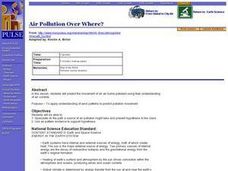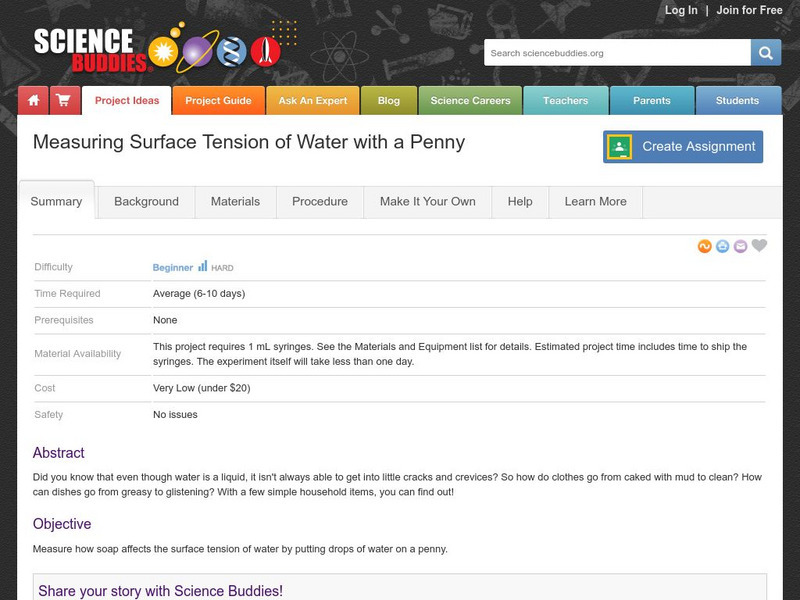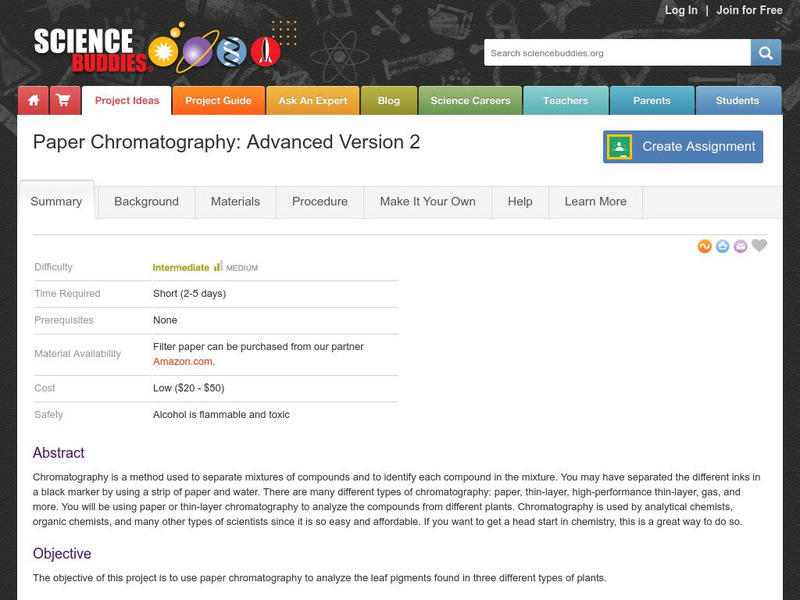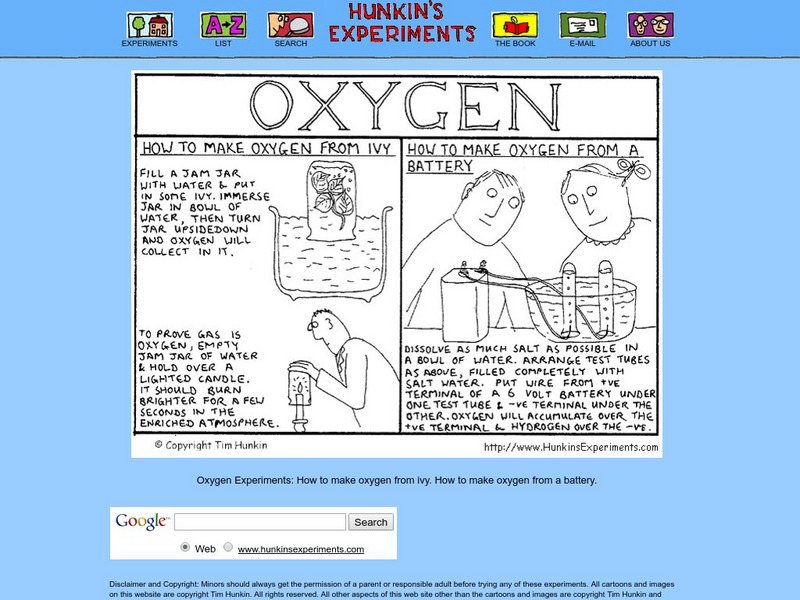Curated OER
Chemical Volcano
Students observe a demonstration performed by the teacher. They examine of a series of acid/base reactions and discover how various indicators work.
Curated OER
Lake Superior Ecology Unit
Sixth graders research Lake Superior and its ecosystem. Students investigate the lake's cycles of mixing and stratification and how these cycles affect the biology of the lake. This lesson plan contains five days of activities.
Curated OER
Yo-Yos, Tow-Yos and pH, Oh My!
Students explore how hydrothermal vents are formed and where they are located on the ocean floor. They study how scientists use CTDs to locate hydrothermal vents.
Curated OER
Gold Mine
Students view and discuss a demonstration of how gold is mined and panned. They design and create a tunnel that has reinforcements to withstand collapse.
Curated OER
Rate of Solution Demonstration
Students explore the factors that can increase the rate of dissolution for a solid. They complete a laboratory exploration in which they compare the dissolution rate of a whole sugar cube to that of a crushed sugar cube in a variety of...
Curated OER
Air Pollution Over Where?
Learners predict the movement of an air borne pollutant using their understanding of air currents. They determine which governments and/or communities should be contacted to be forewarned. They also explore the properties of their...
Science Buddies
Science Buddies: Measuring Surface Tension of Water With a Penny
Have you ever wondered what makes water 'bead' up on a freshly waxed car? In this project you'll investigate the chemistry of surface tension by measuring how many drops of water a penny can hold.
Royal Society of Chemistry
Royal Society of Chemistry: Kitchen Chemistry: Salt and the Boiling Point [Pdf]
An experiment where students test how the boiling point of water is affected by adding salt. The experiment is well laid out with pictures that show how to perform the experiment.
American Chemical Society
Middle School Chemistry: Molecules Matter
Young scholars observe and discuss water on the molecular level using the idea that water is composed of tiny molecules that are attracted to one another.
Science Struck
Science Struck: Make Glowing Water Without a Black Light
Presents three easy experiments where you can make water glow in the dark.
Science Education Resource Center at Carleton College
Serc: Do Water Molecules Have Space Between Them?
In this chemistry lab, students investigate whether water molecules have any space between them by filling a glass with water, and adding salt without the water overflowing. They will also experiment with the temperature of the water.
Science Buddies
Science Buddies: It's Raining, It's Pouring: Chemical Analysis of Rainwater
Here is an interesting project that could be approached from several different scientific angles: Environmental Science, Weather & Atmosphere, Chemistry, or Plant Biology. You can probably think of your own variations to emphasize...
NOAA
Noaa: Estuaries 101 Curriculum: Extreme Weather and Estuaries
Students investigate how hurricanes can affect National Estuarine Research Reserve System estuaries. This activity consists of 2 parts which help deepen understanding of estuarine systems: Investigating an Estuary and Impact of Extreme...
CK-12 Foundation
Ck 12: Earth Science: Seawater Chemistry Study Guide
[Free Registration/Login may be required to access all resource tools.] This study guide summarizes key points about the composition of ocean water. Includes a few questions to check for understanding.
Science Buddies
Science Buddies: What's the Point of Boiling?
You know that water can exist in three separate phases: solid (ice), liquid (water), and vapor (steam). To change from one phase to another, you simply add (or remove) heat. When water boils, what happens to molecules (for example sugar...
Science Buddies
Science Buddies: Paper Chromatography: Advanced Version 2
Chromatography is a method used to separate mixtures of compounds and to identify each compound in the mixture. You may have separated the different inks in a black marker by using a strip of paper and water. There are many different...
Science Buddies
Science Buddies: Put Some Energy Into It! Use a Calorimeter to Measure
In this science fair project, use a calorimeter with an attached heating element to measure how water responds to added thermal energy.
Hunkins Experiments
Hunkin's Experiments: How to Make Oxygen From a Battery
Hunkin's Experiments is a group of simple cartoon illustrations of scientific principles. Some would work well in the classroom, but others have little value beyond entertaining students. All of the projects are easy to do. This one...
eSchool Today
E School Today: Your Cool Basics on Ocean Acidification
Looks at ocean acidification, what causes it, the impact of it, and possible ways to reduce it.
Science Bob Pflugfelder
Science Bob: Homemade Slime!
Contains a procedure for creating slime -- a polymer formed by mixing water, borax, Elmer's glue, and food coloring. Following the procedure, the site contains a brief description of what polymers are.
US Environmental Protection Agency
Epa: Making a Natural P H Indicator
At this site you will find a step by step process for making a natural pH indicator. One of the main materials you need to have on hand is a red cabbage.
Other popular searches
- Lake Water Chemistry
- Water Chemistry Ions
- Co2 Water Chemistry
- Water Chemistry Lesson Plans
- Ocean Water Chemistry
- Basic Water Chemistry
- Water Chemistry Properties
- Storm Water Chemistry
- Marine Water Chemistry
- Size vs. Water Chemistry
- Chemistry of Water
- Water Chemistry Nitrate







![Royal Society of Chemistry: Kitchen Chemistry: Salt and the Boiling Point [Pdf] Activity Royal Society of Chemistry: Kitchen Chemistry: Salt and the Boiling Point [Pdf] Activity](https://d15y2dacu3jp90.cloudfront.net/images/attachment_defaults/resource/large/FPO-knovation.png)








